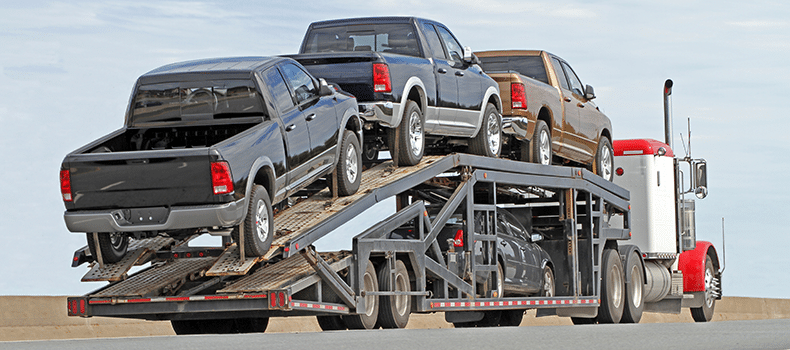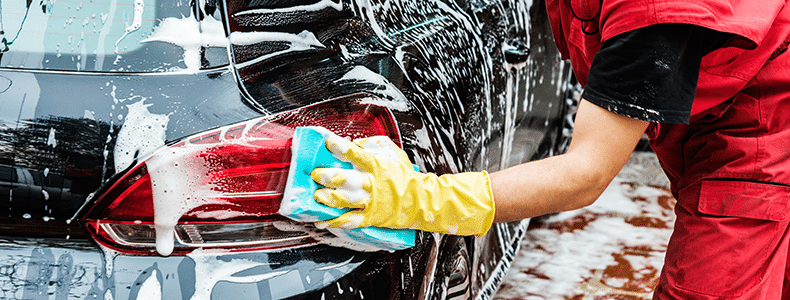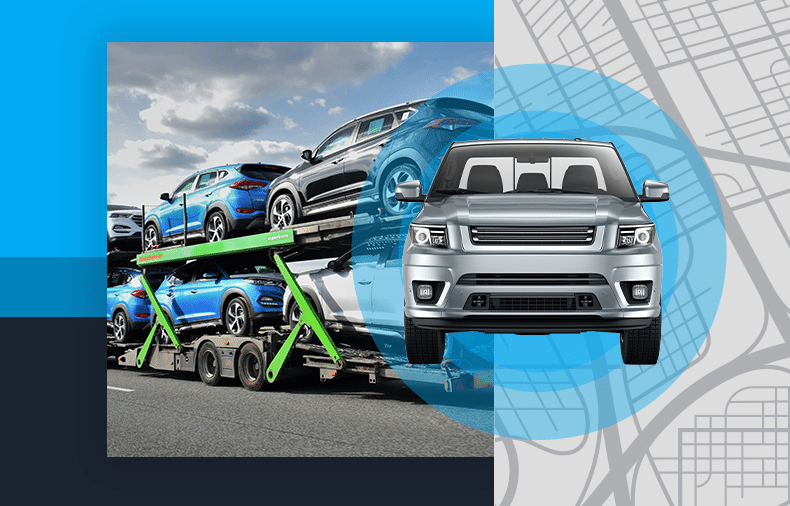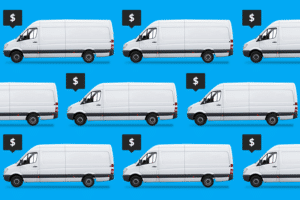Although transporting your vehicle from one location to another might feel overwhelming, there’s good news. With the right methods and experienced professionals at your side, you’ll be able to make the process as seamless and stress-free as possible.
Professional help and expert insights are essential to navigating the shipping process, whether you’re relocating to a different state, purchasing a vehicle from a distant location, or transporting a unique vehicle. At uShip, we’ve got you covered with a wide range of options.
With our nationwide network of car carriers, free quotes, and expert tips on vehicle shipping, we make it easy to have a smooth and effortless vehicle shipping experience. Here’s how to prepare to ship your vehicle for a trouble-free relocation.
UNDERSTANDING VEHICLE TRANSPORT: WHAT YOU NEED TO KNOW BEFORE SHIPPING

Want to send your car across the country? Here are some key factors to consider to help you understand the important issues and options involved in transporting a car.
- Distance: The distance your car must travel directly affects the amount of time and money you’ll need to transport it. Generally, prices and transportation times tend to increase as the distance increases.
- Shipping costs: Your shipping costs will vary depending on your vehicle’s size, weight, and type. Transporting SUVs and trucks, which are larger and heavier, is often expensive.
- Shipping method: Several shipping choices are available depending on when you’d like your order to be delivered. Some services, like guaranteed arrival dates or expedited shipping, may cost extra.
CHOOSING THE RIGHT SHIPPING METHOD
When it comes to transporting your vehicle, choosing the appropriate shipping method is crucial. Whether you’re moving across the country or overseas, this decision can impact your shipping costs, safety, and convenience.
OPEN TRANSPORT
When you choose open transport, your car will be sent on an open trailer, leaving it vulnerable to the weather. This is the best and most economical option if you need to ship a car. Although your vehicle will be safely attached to the trailer, it can be subjected to elements, dust, and road debris while in motion.
The advantages of open transport include:
- It’s less expensive than enclosed transportation.
- It offers availability and more regular shipment schedules.
- The majority of regular cars can use it.
ENCLOSED TRANSPORT
When you choose enclosed transport, your car will be sent in a completely sealed trailer, providing an extra degree of safety. This is the way to go when it comes to protecting expensive, historic, or otherwise special automobiles from the weather.
The main advantages of enclosed transport include:
- It provides superior defense against dust, road debris, and the elements.
- It offers improved safety and confidentiality while in transit.
- It’s often recommended for delicate or expensive automobiles.
SECURING YOUR PICKUP AND DELIVERY METHOD
Once you’ve decided on your shipping method, it’s time to navigate the delivery options for your vehicle. Here’s how different delivery methods can affect the shipping process.
DOOR-TO-DOOR DELIVERY
Your car will be collected and delivered to your specified locations as soon as door-to-door transportation becomes legally and safely feasible. This way, you won’t have to worry about going to a terminal to drop off or pick up your car.
The key advantages of door-to-door delivery include:
- It offers easy pickup and delivery where you need them.
- It reduces the inconvenience of having to coordinate several modes of transportation.
- It’s intended for those who are either too busy or don’t have easy access to designated areas to drop off their vehicles,
TERMINAL-TO-TERMINAL VEHICLE TRANSPORT
When you choose terminal shipment, you may arrange for the carrier to pick up your vehicle at a specific place, such as a transportation hub or storage facility. However, you’ll be required to collect your car from a comparable facility located close to your final destination.
The advantages of terminal-to-terminal transport include:
- It’s frequently more cost-effective than door-to-door delivery.
- It’s apt for locations close to terminals or those with more flexible schedules.
- You’ll have access to a possible expansion of available shipping methods and carriers.
When you plan to transport your vehicle, consider your preferences, requirements, and budget. Take into account all of the factors above before settling on a mode of transportation.
PREPARING YOUR CAR FOR TRANSPORT: HOW TO ENSURE A SMOOTH PREP PROCESS

If you want to ship your car without issues, it’s essential to prepare it for transport. These easy steps will help you prepare your car for transport.
STEP 1: CLEAN AND INSPECT YOUR VEHICLE’S CONDITION
- Clean the inside and outside of your car well before shipping it. This will make it easy to see any damage that was there before the transport and any problems that might happen during the journey.
- Wash the outside of your car to remove any dirt, grime, and junk.
- The buttons, seats, and floor mats should all be cleaned on the inside.
- Carefully check over your car and make a note of any scratches, dents, or other damage you find.
TAKE 2: REMOVE YOUR BELONGINGS AND SECURE LOOSE ITEMS
- Next, remove any personal belongings so they aren’t lost or damaged during transport. This also makes your car lighter, which can help reduce the cost.
- Take everything from the inside and back of your car that is personal, like clothes, tools, and keepsakes.
- Remove any add-ons that can be taken off, like GPS devices, phone chargers, and custom sound faceplates.
- Keep any loose things, like extra change, garage door keys, or parking passes, in place or take them away.
STEP 3: TAKE NOTE OF ANY ISSUES WITH YOUR VEHICLE
- For your safety and peace of mind, carefully record your car’s state before shipping it. This will show how your car looked before it was shipped, which can be useful if it’s damaged during transport.
- Take thorough pictures of your car from every angle, including close-ups of any damage or unique features.
- Check that the pictures are clear and well-lit to show your car in its truest form.
- Consider writing down a list of your car’s damage, including any scratches, dents, or other issues.
MORE TIPS FOR PREPARATION
- Check to see if your car has any fluid leaks and that all of the fluids are in the right amounts.
- If you need to, check the tire pressure and pump it up to the suggested amount.
- Turn off any alarms so that they don’t drain your battery while you’re traveling.
- Leave a quarter tank of gas in your car so that you can load and unload.
- Give the carrier an extra set of keys and keep one set for yourself.
CHOOSING THE RIGHT CARRIER: HOW TO FIND THE PERFECT MATCH
Choosing the right carrier is crucial if you’re planning to ship your vehicle. For a smooth shipping process, aim to hire a carrier that you feel confident handing your vehicle over to. Here’s how to navigate different carriers to find the perfect match for your next transport.
RESEARCH AND READ REFERENCES
Conduct some research before deciding on a carrier. Read reviews to find out what other people thought of the service and their shipping experience. Verify the carrier’s standing with relevant organizations, such as the Better Business Bureau, and research its reputation. It’s also a good idea to confirm if they’re registered and licensed appropriately.
Another wise move is to inquire about the carrier’s references. Contact some of their former clients and ask for their honest opinions. This will give you a clearer picture of what to anticipate during your own shipping experience.
VERIFY LIABILITY INSURANCE
Verify that the carrier provides sufficient liability insurance to safeguard your vehicle in the event of any mishaps or harm during transit. Additionally, inquire about their cargo insurance policy, which will protect your vehicle during shipment.
Don’t forget to review your auto insurance policy. Examine the coverage during transport and make note of any gaps. Don’t be afraid to inquire about the carrier’s policy on claims and disputes. Remember: You can always purchase a uShip Protection Plan at checkout for complete peace of mind.
FIND VEHICLE TRANSPORT QUOTES ON USHIP
Not sure where to start? Visit uShip for some helpful starting points if you’re feeling overwhelmed. If you’re looking for a carrier, you’ll be able to find dependable shipping providers through our user-friendly platform, all in one place. All you need to do is describe your vehicle and shipment requirements to start the process. From there, you’ll receive estimates from various carriers.
Spend some time perusing the profiles of each carrier. If you want to know how reliable they are, look at their reviews, ratings, and shipping records. Plus, you have the option to send them a private message via the website to clarify anything or ask any questions you may have.
ADDITIONAL TIPS FOR HIRING A CARRIER
Here are some factors to keep in mind when comparing potential carriers:
- To compare your options, request shipping quotes from multiple carriers.
- Remember: The best deal isn’t always the cheapest. Look at the carrier’s service quality, years in business, and reputation as well as the price.
- Ask about their method of contact and how they intend to keep you informed at every stage of the shipment procedure.
- Before you sign anything, make sure you understand all of the terms and conditions.
Finding the right carrier can take time and energy, but it’s well worth it. If you put in the time and effort and use tools like uShip, you can find a reliable carrier that checks all the boxes. Your patience in finding the perfect match will be rewarded when your vehicle arrives undamaged.
BOOKING YOUR SHIPMENT: NAVIGATING THE BOOKING PROCESS WITH EASE
At first, booking your carrier might feel stressful. Fortunately, by breaking it down into simpler steps, you’ll be able to move forward with confidence. Here’s how to get started.
STEP 1: REQUEST MULTIPLE QUOTES
Obtain quotes from multiple carriers before you make a decision. Most of the time, you can do this over the phone or online. They’ll need to know the make and type of your car, as well as where you’re shipping it from and where you’re shipping it to. Luckily, uShip makes this possible to do on one platform, saving you valuable time.
STEP 2: COMPARE THE QUOTES
Once you have a few quotes, carefully compare them. Price is important, but it shouldn’t be the only thing you consider. Consider the carrier’s reputation, how much insurance they offer, and how long they say it’ll take to ship. Reading reviews from other shippers can give you a good idea of what to expect. Spend some time looking for a carrier that you feel confident in.
STEP 3: LOCK IN THE DEAL
Next, it’s time to book your shipment. You’ll need to give the carrier more specific information, like the exact addresses where you want the car picked up and dropped off, the times you’d like it shipped, and any special instructions you have for the driver, like if your car has a strange way of starting.
STEP 4: PREPARE YOUR VEHICLE
Take some time to prepare your car for the trip before the pickup day. Remove your personal belongings, wash it well, and make sure the gas tank isn’t more than a quarter full. Let the carrier know ahead of time if your car has any custom parts or accessories.
STEP 5: GET READY FOR INSPECTION
When they come to pick up your car, the carrier will carefully inspect it and note any damage. Make sure to be present for this part so you can look over the report and sign it. The carrier will give you a copy of the repair report to keep.
STEP 6: STAY IN THE LOOP
You don’t have to do anything while you wait for your car to get where it needs to go. The carrier should update you on how things are going and let you know if there are any problems. During this time, don’t hesitate to contact the carrier if you have any questions or concerns.
STEP 7: DELIVERY DAY
The carrier will give your car one last check to make sure it’s in the same shape it was when it left. Look over your car slowly and tell the carrier if you see anything wrong. If everything looks good and your car is ready to go, sign the last of the paperwork.
WHAT TO EXPECT DURING SHIPPING
You might be curious about where your car is and how it’s going during transit. It’s easy to keep track of your car’s progress, especially since most carriers offer tracking services. An online site, regular emails, or even a mobile app could be used for this. Are you interested in staying in the loop? Don’t hesitate to ask your service provider about their tracking options.
CONTACTING YOUR CARRIER TO STAY IN TOUCH
A top-notch carrier will keep you in the loop every step of the way, whether updating you on your car’s progress or alerting you to any changes in the estimated delivery date. They should be proactive in their communication, but don’t be shy about reaching out if you have any questions or concerns along the way.
A reliable carrier will happily address your inquiries and provide you with peace of mind. They understand that entrusting your vehicle to someone else can be unnerving, so they’ll go the extra mile to ensure you feel informed and supported throughout the process.
PROBLEMS AND DELAYS: HOW TO DEAL WITH THE UNEXPECTED
Sometimes, things don’t go as planned when shipping cars. Conditions like weather, traffic, or problems with the carrier’s mechanics can cause delays that are out of the blue. Your carrier should let you know if your shipment is late and give you a new delivery date. In addition, your carrier should have a clear plan for what to do if something goes wrong during transport, like hitting something and damaging your car.
RECEIVING YOUR VEHICLE: ENSURING A SEAMLESS DELIVERY
Your vehicle has finally arrived at its location! Now, it’s time to check it over carefully. Ensure there are no dings, scratches, or other signs of damage that might have happened during transportation. Don’t be worried if problems arise; instead, carefully document the details and notify the carrier as soon as possible. They’ll help you take the next step.
After completing the shipment, take a few moments to rate and review your carrier on uShip. Your opinion, whether favorable or unfavorable, can help others choose the right carrier for their next transport.
If you follow these easy steps, the delivery process will go off without a hitch. After that, you can relax and continue your journey!
CONCLUSION
When shipping a vehicle, start by obtaining multiple quotes from reputable carriers on uShip so you can compare prices and services.
To prepare your vehicle, remove personal items, ensure it’s in good working order, leave only a quarter tank of gas, and document any existing damage. Additionally, understand the provided insurance coverage and consider purchasing additional protection if needed.
Throughout the process, track your shipment and communicate with the transport company. Finally, consider using uShip—an online marketplace that connects you with experienced carriers. We’re here to help you find quotes, compare options, and book your shipment for a smooth shipping process.
Visit uShip today to learn more and get started with shipping your vehicle. Our helpful customer support team is available if you have any additional questions. Happy shipping!
MOST COMMON QUESTIONS PEOPLE ALSO ASK (PAA)
What’s the average cost of shipping a car?
The average cost of shipping a car varies based on factors like distance, vehicle type, and shipping method, but typically ranges from $500 to $1,500.
How long does it take to ship a vehicle?
Shipping a vehicle usually takes 1-7 days from the time of pickup to delivery, depending on the distance and route.
Is my vehicle insured during transport?
Most reputable carriers carry cargo insurance to cover vehicles during transport. Additional protection is also available through the uShip Protection Plan.
Can I ship a non-running vehicle?
Yes, non-running vehicles can be shipped, but special equipment may be required, which can increase the cost. Be sure to indicate this in your listing.
Are there any restrictions on what can be transported?
Restrictions may include items inside the vehicle, vehicle modifications, and extremely large or heavy vehicles. Check with your carrier for specific restrictions.
What’s the difference between open and enclosed transport?
Open transport is the most common and economical method, with vehicles exposed to the elements. Enclosed transport provides more protection but is more expensive.
How do I prepare my vehicle for shipping?
To prepare your vehicle, remove personal items, conduct a maintenance check, note any existing damage, and ensure the vehicle has no leaks and enough fuel for loading/unloading.
What happens if my vehicle is damaged during transport?
If damage occurs during transport, immediately notify the driver and service provider. The carrier’s insurance should cover repairs if they’re found at fault. If you purchased protection through uShip, simply open a case and let us handle the rest.
Can I track my vehicle during transit?
Yes, most carriers offer online tracking or regular updates via phone or email to keep you informed of your vehicle’s location and estimated delivery.



